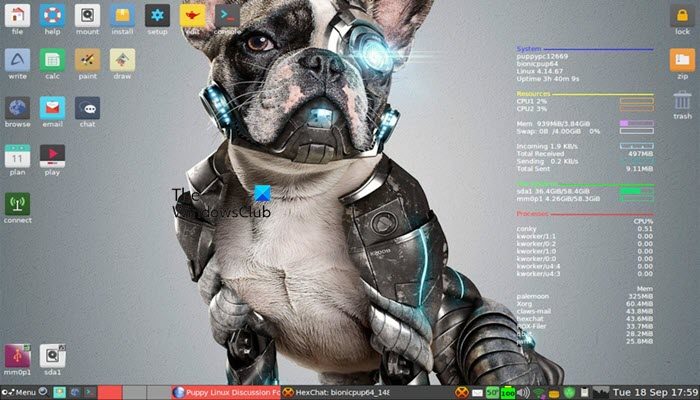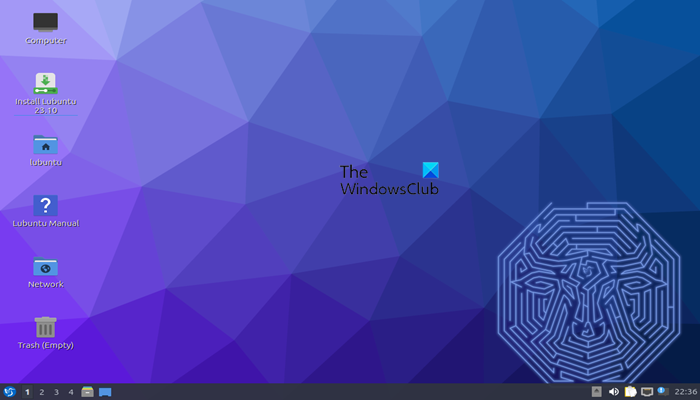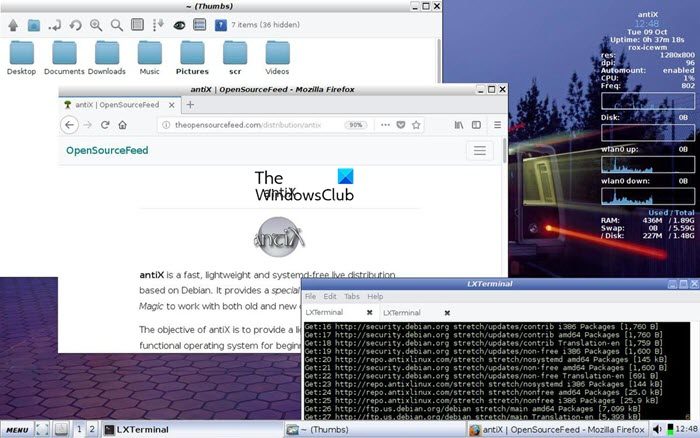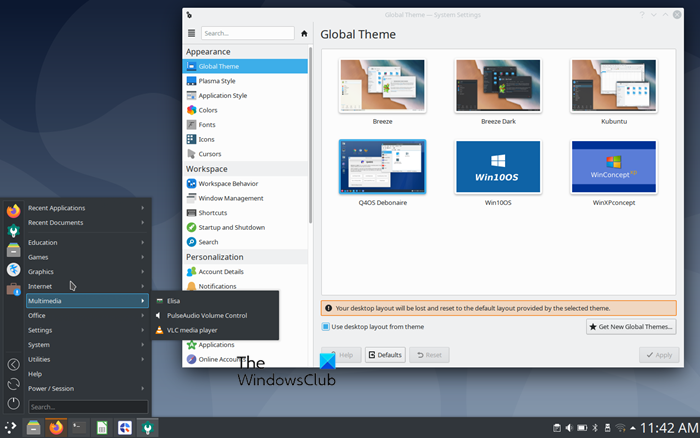Looking for the perfect Linux distribution to breathe new life into the old or low-end computer? If yes then you are at the right place. In this article, we will explore some of the top picks for lightweight Linux distros that are tailored specifically for older or less powerful hardware. Whether the motives behind doing so include reviving an aging device or just maximizing performance on a budget, these lightweight options are sure to meet the needs.
Why should you choose a lightweight Linux distro?
There are several advantages to choosing a lightweight Linux distro, the first one is getting optimal performance on minimal system resources, making them ideal for older hardware with limited processing power, RAM, and storage space. Apart from this, lightweight distros typically have faster booting times and are more responsive during everyday use compared to heavier resource-intensive operating systems. In the upcoming section, we are going to see some of the best lightweight distros options.
Best Lightweight Linux Distros for low-end or older computers
If you are looking for the best lightweight Linux Distros for low-end or older computers, check out the list curated below:
- Puppy Linux
- Lubuntu
- antiX
- Bodhi Linux
- Tiny Core Linux
- Q4OS
- Absolute Linux
Alright, let’s launch into it.
1] Puppy Linux

The first name on the list, Puppy Linux is a must-try Linux distro for low-end PC users. It is renowned for its extremely small size and minimal system requirement. The distro is designed to run efficiently even on old hardware with limited resources, including computers with low RAM and older processors. Also, it has the unique ability to run entirely in RAM once booted for fast performance.
Furthermore, it is convenient for users who are looking for a portable lightweight solution as Puppy Linux can be easily installed on a USB flash drive or CD/DVD. If security is the concern, then rest assured that regular updates and patches addressing vulnerabilities are put in place by the Distro. The interface is also simple and intuitive, making this a user-friendly experience. This, however, comes with a few essential pre-installed apps and tools such as AbiWord, Gnumeric, and MPlayer, and users can further install additional software to customize their system according to their needs.
Lastly, Puppy Linux has an active and supportive community of users and developers who provide assistance, documentation, and resources. Users can find help, tutorials, and tips on forums, wikis, and other community platforms. Navigate to puppylinux-woof-ce.github.io to get this distro.
2] Lubuntu

Next on the list is Lubuntu, another well-known name in the list, mostly for its almost similar features to Ubuntu. This is an official Ubuntu flavor and by this, we mean that users will have access to a wide range of software packages and repositories similar to the ones found in Mate. It also resembles Linux Lite in that both have discontinued support for 32 but systems starting from version 18.10. However, there are no compromises in providing a lightweight yet energy-efficient desktop environment.
Just like the first distro, Lubuntu also harbors an active community of users and developers who provide support and all things related to it. Furthermore, this distro utilizes the LXQt desktop environment (designed to be resource efficient while offering a familiar user experience and lightweight), has a user-friendly interface, and comes with apps such as Firefox, LibreOffice, VLC, Feather pad, Trojito, and many more. Before selecting this package, make sure to check out the bare minimum system requirements, such as Pentium 4, Pentium m AMD k8, or newer processors, along with 1GB of RAM.
Being a part of the Ubuntu ecosystem, Lubuntu receives regular updates and security patches, ensuring a stable and secure computing experience. Visit lubuntu.me to know more.
3] antiX

antiX is the third name on the list and it is equally lightweight for the low-end PCs. It is designed to run efficiently on low-end or older hardware with minimal system requirements such as PIII Processor paired with 255 MB RAM and 4 GB hard disk space. Furthermore, antiX is system-free, which means that it uses alternative init systems like SysVinit or runIt. It is a major appeal for people who prefer systems without systems for various reasons including simplicity and customization.
antiX can be run as a live system from a USB flash drive, CD, or DVD without the need to install it on the hard drive, making this alternative a convenient option for testing or using the Operating system without making permanent changes to the computer. Just like the first two, community support is great and users can easily find help, tutorials, and so on. To download this tool, navigate to antixlinux.com.
4] Bodhi Linux
Bodhi Linux features the Enlightenment 17 desktop environment, known for its minimalism, and visual appeal, and is designed to run efficiently on minimal system resources. Built on a solid Ubuntu base, this distro inherits the stability and reliability of Ubuntu LTS (Long-Term Support) releases. Furthermore, there are 4 versions of Bodhi Linux with different traits that users can opt for: Standard or Legacy for 32-bit hardware, AppPack, and HWE for 64-bit Operating system kernels and new hardware.
Despite its lightweight nature, it provides users with customization options, allowing them to tailor the desktop environment to their preferences. From themes and widgets to panel layouts and desktop effects, users can personalize their experience. For the system requirement, Bodhi Linux asks for a 500MHz processor, 256MB RAM, and 5GB memory. However, this can also be seen as a negative side due to it missing out many on important pre-installed apps. However, Bodhi Linux follows a philosophy of simplicity and minimalism and has an active and supportive community, so if this is what you are looking for, give this distro a try from bodhilinux.com.
5] Tiny Core Linux
If you are looking for an incredibly small in size distro, typically around 20MB for a core system, then Tiny Core Linux should be the first one to check out. this is easy to download, install, and run on limited hardware resources. The developers have offered three distinct x86 cores: Core as the fundamental system, featuring a command line interface, TinyCore, and Coreplus. TinyCore is suitable for desktops equipped with network connectivity because it integrated X/GUI extensions, fostering a dynamic FLTK/FLWM graphics desktop environment.
The remarkable thing is that it can operate seamlessly even on antiquated hardware setups like an i486DX, necessitating only a paltry 28MB RAM for Core and 46MB for Tiny Core. However, it’s necessary to keep in mind that this is not a suitable user-friendly distro for newcomers. All in all, Tiny Core Linux offers a nice, small, very lightweight option for experienced people looking for the best Lightweight Linux Distros for low-end or older computers. Navigate to their official website, tinycorelinux.net to know more.
6] Q4OS

Q4OS is a lightweight Linux distribution based on Debian that uses the trimmed-down Trinity desktop environment. It is designed to be productive and offers a range of dedicated utilities and optimizations. This distribution is suitable for both newcomers and experienced Linux users. While the default Q4OS installation does not include a full suite of applications, it provides powerful tools to install apps and proprietary codecs based on your usage requirements. Additionally, on relatively modern hardware, Q4OS supports desktop effects. To download Q40S, you need to navigate to q4os.org.
Read: How to install Windows Subsystem for Linux 2 on Windows
7] Absolute Linux
Absolute Linux is a lightweight Linux distribution that is often overlooked. It is based on Slackware and comes in a 64-bit version with pre-installed software such as Firefox, LibreOffice, Inkscape, GIMP, Google Earth, Calibre, and more. This distribution is compatible with Slackware, so you can use almost any package from the same version of Slack on Absolute. Additionally, development libraries (headers) are included with the default installation, which makes it possible to code/build almost anything from the source. If you like this prospect, go to absolutelinux.org.
Read: How to add Users to WSL Distro
Which Linux distro is best for an old laptop?
From the Linus distros mentioned above, the very best ones include Bodhi Linux and Tiny Core for an old laptop. However, there are some other distros as well, such as MX Linus and Peppermint OS, that users can look out for their old devices.
Also Read: Best Linux distributions which look like Windows OS.